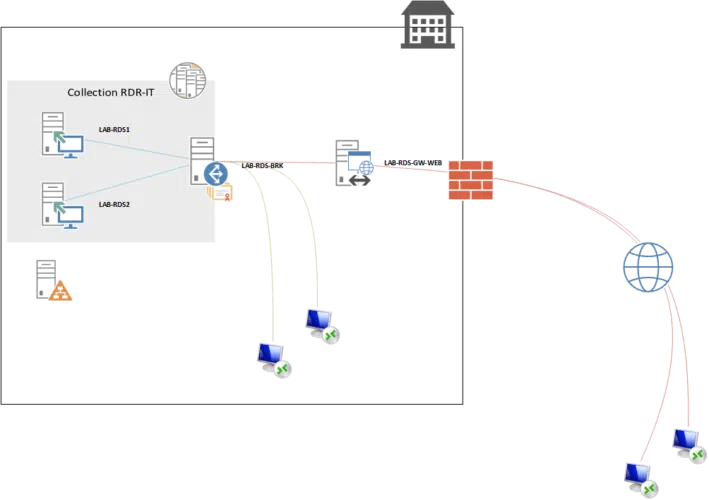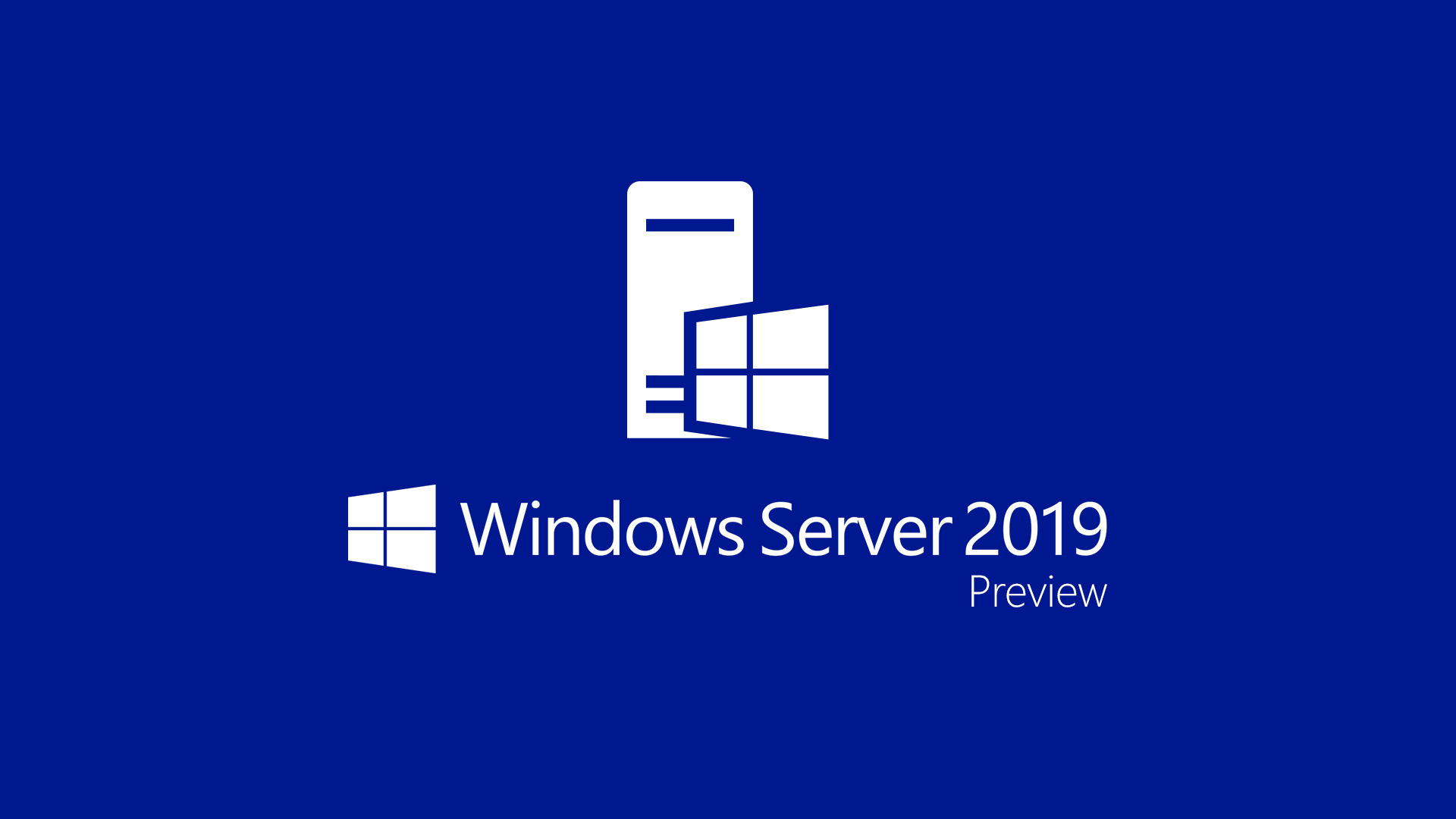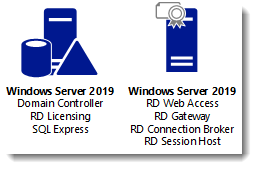The primary difference between Remote Desktop Services and the traditional mainframe environment is that the dumb terminals in a mainframe environment only provide character-based input and output. A Remote Desktop Connection (RDC) client or emulator provides a complete graphical user interface including a Windows operating system desktop. Windows Server 2016 removes the restriction for the number of Connection Brokers you can have in a deployment when using Remote Desktop Session Hosts (RDSH) and Remote Desktop Virtualization Hosts (RDVH) that also run Windows Server 2016. The following table shows which versions of RDS components work with the 2016 and 2012 R2 versions of the Connection Broker in a highly available deployment wit.
Windows Server 2019 RDS role—which plays an increasingly crucial part in today’s digitally-driven business innovations—has been likewise designed to support areas like hybrid cloud, security, and hyper-converged infrastructure.
RDS (Remote Desktop Services) has now been equipped with new and improved features that help businesses to acquire better capabilities to:
- Connect between on-premises and public cloud infrastructures
- Protect against cyber threats, detect threats, and respond to threats
Windows Server 2019 RDS Features That Support Hybrid Cloud Adoption
Instead of just maintaining either a public or private cloud, many businesses are now starting to adopt hybrid cloud and even multi-cloud strategies. Windows Server 2019 RDS supports these strategies by enabling businesses to carry out a public cloud (via Azure) or on-premises deployments. Also, it enables deploying infrastructure roles (e.g., RD Connection Broker, Gateway, Web Access, Licensing) in Azure while keeping host virtual machines on-premises (if they choose to).
The previous version of RDS already had the capability to store business resources, user personalization data, and settings on either on-premises datacenters or in Azure. By leveraging the existing and new hybrid–cloud capabilities of RDS, businesses can have more flexibility in the way they build their virtual application and desktop environments.
How Long will Windows Server 2019 be Supported?
The life cycle start date for Windows Server Standard 2019 was 13th November 2018. The mainstream support date is expected to end on 9th January 2024. The extended support date is specified as 9th January 2029.
Features That Improve Cybersecurity Posture
Rising cyber threats are forcing businesses to increase their focus on strengthening cyber defenses. RDS 2019 helps in this regard by:
- Allowing enterprises to incorporate all local and remote server management into Windows Admin Center. This consolidation simplifies specific server administration tasks, like gathering information for troubleshooting and changing specific settings.
- Introducing several Windows Defender optimizations for multi-session.
- Introducing DTLS-based encryption to improve end-to-end security.
Other New Features Worth Mentioning
In addition to those features mentioned earlier, Windows Server 2019 is also accompanied by the following:
- Better forward compatibility (for future versions of Windows Server) of high availability RD Licensing Servers
- Performance Counter (perfmon) APIs for building monitoring dashboards
- New notifications for RemoteApp in the Action Center
- Improvements in GPU virtualization technology
- Ability to perform high-level redirection of built-in or attached video cameras, which in turn results in better video streams running at higher frame rates in both new and legacy remote applications and desktops

- User Input Delay performance counter that can be set per Process or per Session. It is used for identifying root causes of bad end-user RDP experiences.
Windows Server 2019 RDS licensing

Windows Server 2019 version has enhanced security, cloud integration, and improved end-user experience and has additionally introduced the new server operating system of Remote Desktop Services architecture.
Remote Desktop Services, known in the older versions as Terminal Services helps users control remote computers or virtual machines over the network connection. Any client machine that supports the Remote Desktop Protocol (RDP) is accessible to RDP users.
The Windows Server 2019 RDS licensing model has also been eased out because it lets customers update per-user licenses without the need of direct Active Directory connectivity. In other words, RDS licensing requires users or devices to have a client access license (CAL) when connecting to Remote Desktop Session Hosts (RDSH). The RDSH also obtains a CAL from the Remote Desktop license server automatically. Microsoft also offers a wizard to configure the Remote Desktop licensing server role, thus making licensing faster and efficient.
Deploying Windows Server 2019 RDS on the Cloud
The previous versions of Windows Server required you to bring in your own infrastructure for deploying it to the cloud. This caused reduced flexibility and scalability of Windows Server. However, the newest version (Windows Server 2019 RDS) offers RDS templates that can be deployed and installed directly to the Azure portal. Hence, Windows Server 2019 reaps from all of the benefits of Azure.
Additionally, RDS 2019 also supports hybrid deployments. The infrastructure roles can be deployed on Azure whole the host Virtual Machines (VMs) can be on-premises.
In the security arena, RDS 2019 has introduced the Azure Key Vault. You can manage certificates and use Azure SQL DB for high availability RD licensing.
Microsoft Rds Architecture 2019
RDS subscriptions are also now available through Cloud Solution Provider (CSP). This availability addresses customer needs and also makes desktop and app virtualization support more cost-effective. Since RDS subscriptions can directly be done through CSP, customers and partners do not have to acquire different licenses by going through multiple programs. Customers can hence enjoy a faster-licensing cycle as the CSP integrates with other Microsoft licenses like SQL Server, Office, and Windows Server.
Windows Server 2019 RDS hence makes integration and deployment in the cloud easy, flexible, scalable, and secure.
Windows Server 2019 RDS Pain Points
While these new features certainly improve on the previous version of RDS, there are still pain points that haven’t been addressed in Windows Server 2019. To mention a few:
- Limited load balancing functionality
- No word of support for Linux clients
- No mention of support for other hypervisors other than Microsoft Hyper-V (this might be expected though)
- No mention of improvements in the installation and configuration process
Microsoft Rds 2019 Cal
We’ve discussed those pain points and many others, as well as ways to address them, in more detail in our blog post “How Parallels RAS Enhances Microsoft RDS”. We highly recommend you read it to understand the limitations of RDS and what you can do to address them.
Download a 30-day trial of Parallels RAS today and leverage the advantages of Windows Server 2019!
References:
Microsoft
Acutec
-->Applies to: Windows Server (Semi-Annual Channel), Windows Server 2019, Windows Server 2016
Below are various configurations for deploying Remote Desktop Services to host Windows apps and desktops for end-users.
Note
The architecture diagrams below show using RDS in Azure. However, you can deploy Remote Desktop Services on-premises and on other clouds. These diagrams are primarily intended to illustrate how the RDS roles are colocated and use other services.
Standard RDS deployment architectures
Remote Desktop Services has two standard architectures:

- Basic deployment – This contains the minimum number of servers to create a fully effective RDS environment
- Highly available deployment – This contains all necessary components to have the highest guaranteed uptime for your RDS environment
Basic deployment
Highly available deployment
RDS architectures with unique Azure PaaS roles
Though the standard RDS deployment architectures fit most scenarios, Azure continues to invest in first-party PaaS solutions that drive customer value. Below are some architectures showing how they incorporate with RDS.
RDS deployment with Azure AD Domain Services
The two standard architecture diagrams above are based on a traditional Active Directory (AD) deployed on a Windows Server VM. However, if you don't have a traditional AD and only have an Azure AD tenant—through services like Office365—but still want to leverage RDS, you can use Azure AD Domain Services to create a fully managed domain in your Azure IaaS environment that uses the same users that exist in your Azure AD tenant. This removes the complexity of manually syncing users and managing more virtual machines. Azure AD Domain Services can work in either deployment: basic or highly available.
RDS deployment with Azure AD Application Proxy
The two standard architecture diagrams above use the RD Web/Gateway servers as the Internet-facing entry point into the RDS system. For some environments, administrators would prefer to remove their own servers from the perimeter and instead use technologies that also provide additional security through reverse proxy technologies. The Azure AD Application Proxy PaaS role fits nicely with this scenario.
For supported configurations and how to create this setup, see how to publish Remote Desktop with Azure AD Application Proxy.
